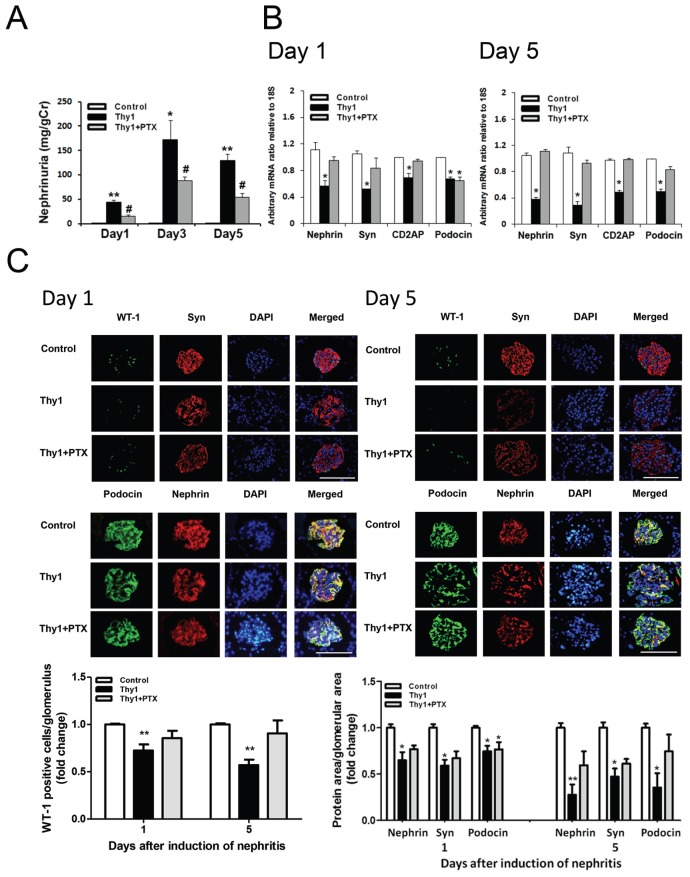Figure 5.
(A) PTX attenuated urinary nephrin excretion through the course of the nephritis. Each bar represents the mean ± SEM for a group of six rats. *p < 0.05, **p < 0.01, versus control rats; #p < 0.05 versus vehicle-treated nephritic rats. (B) PTX partially reversed down-regulated mRNAs for nephrin, synaptopodin and CD2AP on d 1 (left) and nephrin, synaptopodin, CD2AP and podocin on d 5 (right). Each bar represents the mean ± SEM of three experiments. *p < 0.05 versus control rats. (C) Representative immunofluorescent stainings of WT-1 and synaptopodin (upper panels), as well as podocin and nephrin (lower panels) within the glomeruli on d 1 (left) and d 5 (right). Bar size, 100 μm. Lower graphs show that, semiquantitatively, PTX partially reversed the reduction of WT-1–positive cells per glomerulus and the area positively stained for podocyte-related proteins per glomerular area. Values are the mean ± SEM of 25–30 glomeruli. *p < 0.05, **p < 0.01, versus control rats. Thy1, vehicle-treated nephritic rats; Thy1 + PTX, PTX-treated nephritic rats.

